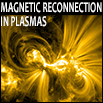Speaker
Dr
Mikhail Sitnov
(JHU/APL)
Description
Magnetic reconnection in the Earth’s magnetotail has important
features that distinguish it from
similar
processes in other space plasma regions, laboratory plasmas and in the
simplest theoretical models.
First, the
very possibility of spontaneous reconnection has been questioned
because of the stabilizing effect of
electrons
magnetized by the north-south (Bz) magnetic field component. Second,
magnetotail reconnection
often
competes with non-reconnection ballooning/interchange and flapping
motions, and relative roles of
these
processes remain unclear. Third, it is distinguished by the so-called
dipolarization fronts, kinetic-
scale shock-
like plasma structures, which dominate the energy conversion. We
discuss the kinetic and MHD
theory of the
magnetotail reconnection onset to identify the equilibria for which the
spontaneous reconnection is
possible.
We show that such equilibria must have a tailward gradient of the Bz
field, which is indeed observed
in the
magnetotail prior to substorm onset. Then we employ 3D full-particle
simulations to demonstrate
that when
the tail becomes unstable with respect to spontaneous growth of
reconnection (ion tearing) mode
the
instability results in the formation of dipolarization fronts. It is
accompanied by changes in magnetic
topology,
which extend in the dawn-dusk direction over the size of the simulation
box, suggesting that
reconnection
onset causes a macroscale reconfiguration of the real magnetotail. The
front formation and
acceleration is also
accompanied by interchange and flapping motions. They significantly
disturb the primary
dipolarization front
but do not destroy it. We find that dipolarization fronts are indeed the
main regions of energy
conversion in
the magnetotail and that the temperature increase near fronts is
consistent with recent THEMIS
observations.
Finally, we discuss virtual satellite observations, which reveal the
potential of the present MMS
observations in
resolving the primary plasma modes associated with the magnetotail
reconnection.
Primary author
Dr
Mikhail Sitnov
(JHU/APL)
Co-authors
Dr
Marc Swisdak
(University of Maryland, College Park)
Dr
Viacheslav Merkin
(JHU/APL)

